In recent months, I’ve been on a bit of a crusade. Not just to rebalance work and life, but to rediscover happiness in things that aren't tied to my constant need to be productive. That’s where something like the HiBy R4, a digital audio player built for pure listening, comes in. Before I review it, though, it’s important to understand the backstory as to why I started using a DAP in the first place.
TL;DR of this Article
The HiBy R4 is a dedicated digital audio player (DAP) that strikes a rare balance between high-end audio performance and affordability. Burnt out from the all-consuming demands of digital life, I looked for a way to enjoy music without distractions. The R4 became that solution.
- Specs & Performance: Snapdragon 665 CPU, ESS SABRE DAC, Android 12, 3GB RAM, 32GB storage (expandable), and responsive UI make it versatile yet simple.
- Audio Quality: Excellent wired sound with full FLAC/Hi-Res support; Bluetooth is a weak point due to degraded battery life, with artifacts and signal drops.
- Design: Sturdy, metal build with physical buttons and a practical lock switch; large and bulky for pockets but durable and stylish.
- Customization: Full Android allows app installs (e.g., EQ apps), some theme tweaks, and music-focused settings.
- Battery: Around 9–10 hours of use; solid for daily commutes or campus life.
Verdict: For anyone overwhelmed by modern smartphones and looking to reconnect with music on their own terms, the HiBy R4 is a solid investment — one that values peace, focus, and pure listening.
Why?
Like many in journalism, I’ve struggled with drawing lines between my job, my online life, and my personal time. Every hobby I ended up pursuing — from music production, to photography and graphic design — eventually became “content.”. The burnout hit hard by the end of my second semester in college with The World Telegram NewsRadio. Back then, it was so bad that I’d spend most of my midday hours after class designing graphics, organizing stories, and composing music. Then, after forgetting to eat dinner, I’d continue working until 3-4 in the morning to finalize copy, edit the soundbites we play on air, and catch up on the stories people are waking up to the next day. And still, by morning, half the stories would need updates anyway.
Turned out, I was experiencing burnout, and it stemmed from two core issues.
Firstly, it came from a lack of separation in the different sectors of my life. Considering my job, it’s practically impossible to fully unplug from the internet. Or at the very least impractical. But unplugging wasn’t the issue. The issue was, I undervalued my personal time because “if you don’t grind, you fall behind”, as I’d often say. It’s the type of mantra that sounds great and means a lot in theory, but when stuff hits the fan, means absolutely nothing. I needed to refocus my free time to do things I enjoy just for the sake of enjoying them, without straying into overindulgence and losing self-discipline.
The second reason came from asking myself the question: of the time I spent working…how much of that time was actually spent working? How much of my “news gathering” process is just mindlessly scrolling on social media? Did I really need to design the same graphic 20 different ways? Or could I be satisfied with the graphics we’ve already got? And what about our jingle? We’ve reinvented that jingle so many times for so many different beds. Do we really need another one?
I decided to start over, and I thought about what it means to focus. That’s when I remembered something Steve Jobs once said...
“People think focus means saying yes to the thing you've got to focus on. But that's not what it means at all. It means saying no to the hundred other good ideas that there are.”.
In stepping back, I realized I missed enjoying music for what it is — not as a tool for my work for inspiration, and not as a file on a DAW timeline — but as a personal escape from the insane world I’ve caught myself in. That led me to the HiBy R4, a digital audio player designed for pure listening, not multitasking.
I ended up buying not one, not two… but three digital audio players during this journey. First was the Majority MP3 Pro from Majority Audio: a budget option I eventually passed on to my co-anchor, Ashton Renna. Then came the iPod Classic 5th Gen, a nostalgia trip that didn’t quite hold up in daily use because of its insanely small battery. And finally, the HiBy R4: the one that stuck. Here’s why.
Introducing the R4
Device Specifications
CPU: Snapdragon 665
DAC: ESS SABRE 9018C2M 32-bit Stereo Mobile Audio DAC [Info]
RAM: 3.0GB
Storage: 32GB
Resolution: 750x1334
Firmware: Android 12, Firmware 1.50
Size: about 5in Tall, 3in in Long, 1in thick
1. UI, Software, and Bluetooth
While the Majority MP3 Pro and iPod met my need for a distraction-free listening experience, they came with serious limitations. When it comes to flexibility (especially in app support), nothing beats native Android.
I regularly rotate between Soundcore, Beats, and Sony Bluetooth headphones. While all three work fine over standard Bluetooth, I need both the Beats and Soundcore’s proprietary apps for EQ adjustment. Without them, the sound skews overly bass-heavy and quickly becomes fatiguing. The iPod doesn’t support Bluetooth at all, and the Majority MP3 Pro, though it does, runs a custom OS that can’t install those apps. That left me stuck with default sound profiles, which weren’t cutting it.
The HiBy R4, by contrast, runs full Android. That means I can install the Sony, Soundcore, and Beats apps, fine-tune my sound, and get exactly the listening experience I want without needing to pull out my phone or deal with distractions. I have a bit of a gripe with the Bluetooth connection, but I’ll get to that in the Sound section.
Glitches
I've had it happen where the player would be on — you can tell because the external LED was on — but pressing the power button (with the lock switch off) would not turn on/off the display, and holding it down did nothing. In that scenario, press the top power button and the bottom next track button to force restart the system. That worked for me to get it to work again.
It's happened to me twice, and I'm not sure what the cause is, so do note that.
With that said, despite running full Android, the R4’s UI feels surprisingly responsive. Swiping between apps or launching HiBy Music is smooth, and I’ve had very few stutters. It’s clearly not flagship-phone fast, but it doesn’t feel like a budget tablet either. It’s somewhere in the comfortable middle. Frankly, it doesn't need to be flagship-level fast anyway.
Storage
The R4 comes with 32GB, and it supports microSD cards up to 2TB. I use a 256 GB card, which holds most of my FLAC and MP3 library with room to spare. You’ll want to invest in fast cards, though, because cheap ones can cause lag when loading large libraries.
2. Size and Portability
The R4 is an absolute unit, to say the least. Part of what drew me to it was the unit's hardware buttons, similar to the Sony NW-A306 (Sony’s latest Walkman model).
The layout is as follows:
- Left side: volume up and down.
- Right side (top to bottom): power, previous track, play/pause, and next track.
- Bottom: 4.4mm balanced output, 3.5mm headphone jack, and a USB-C port.
- Top: a physical lock switch.
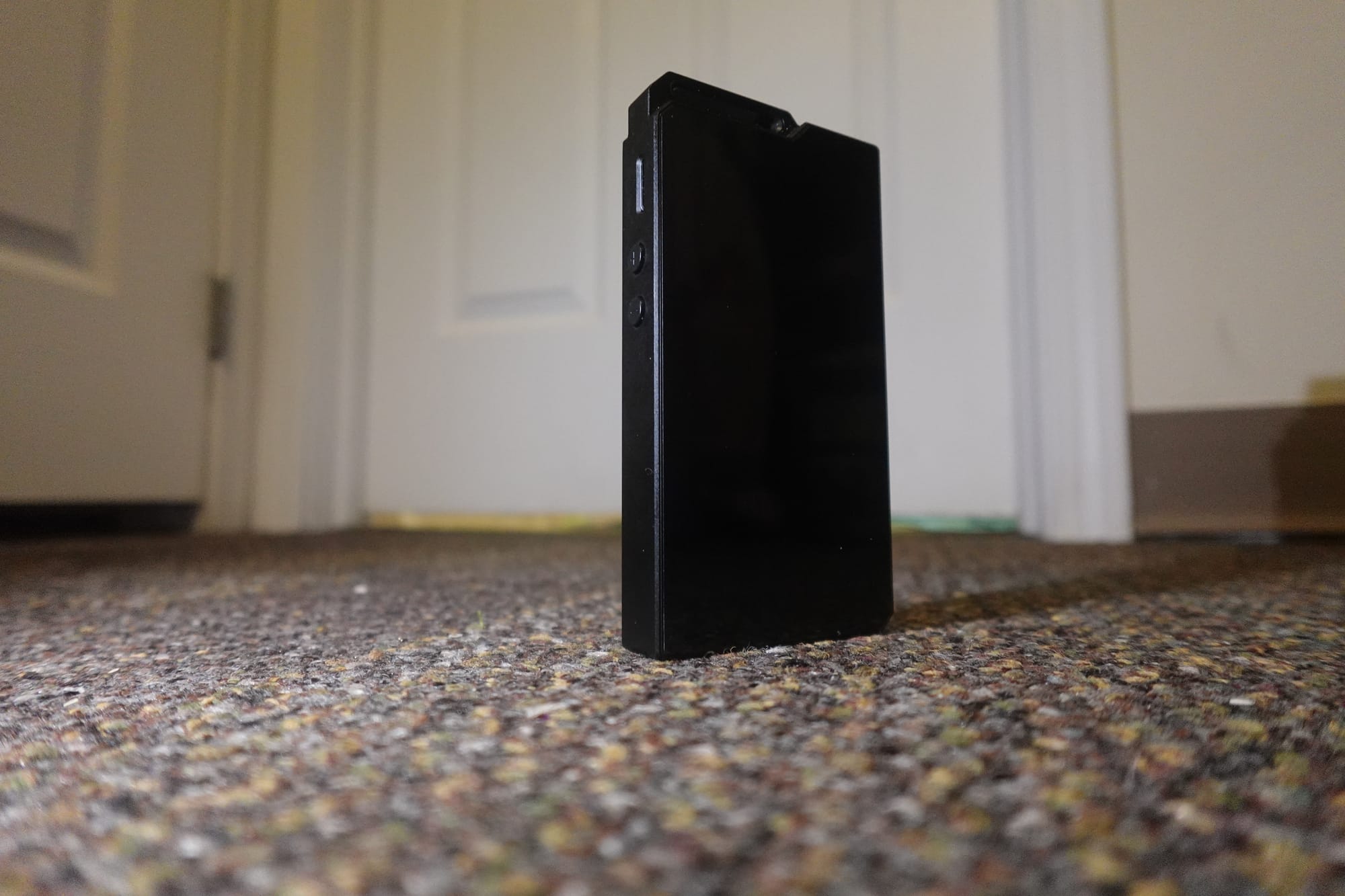
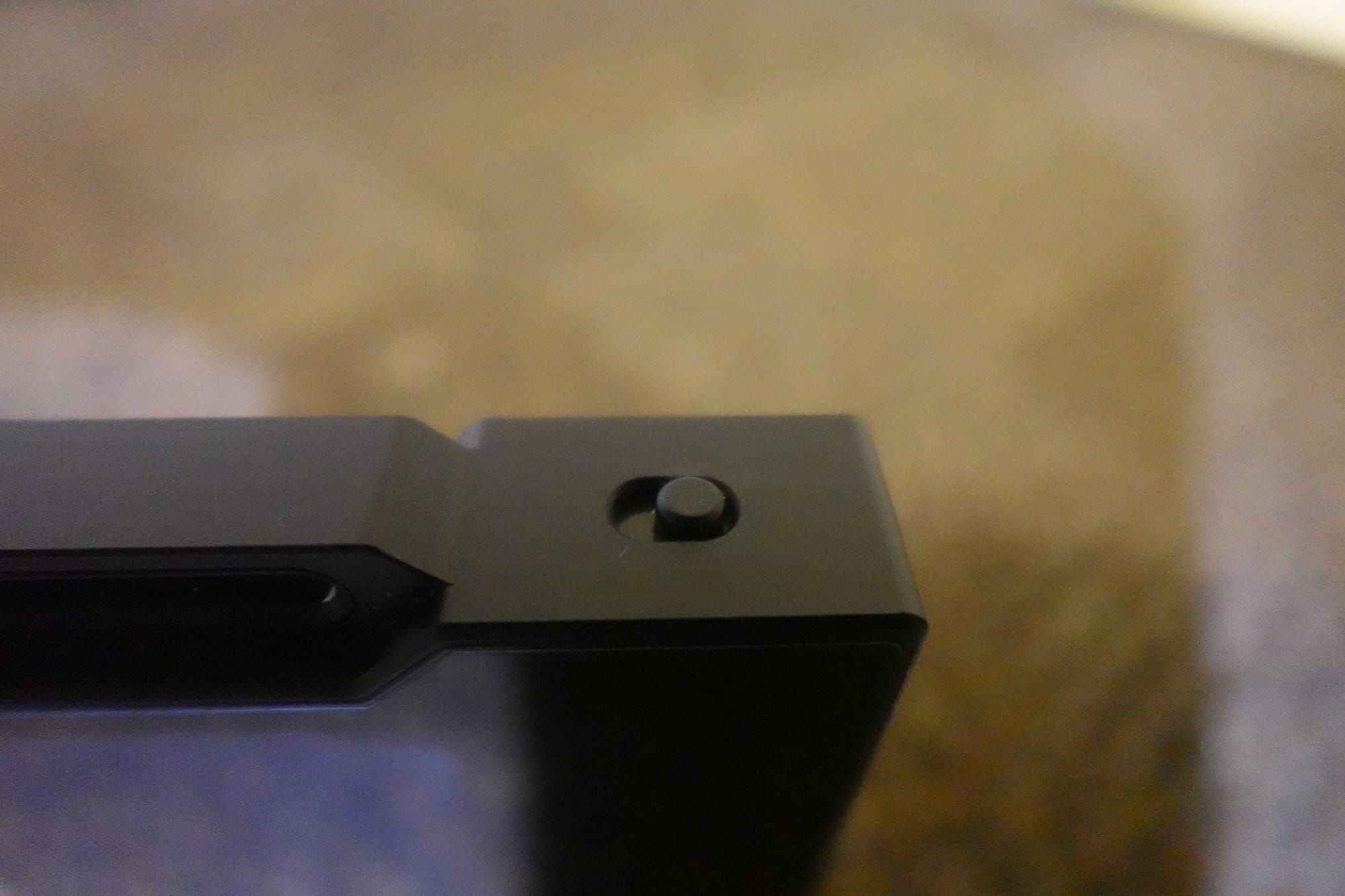
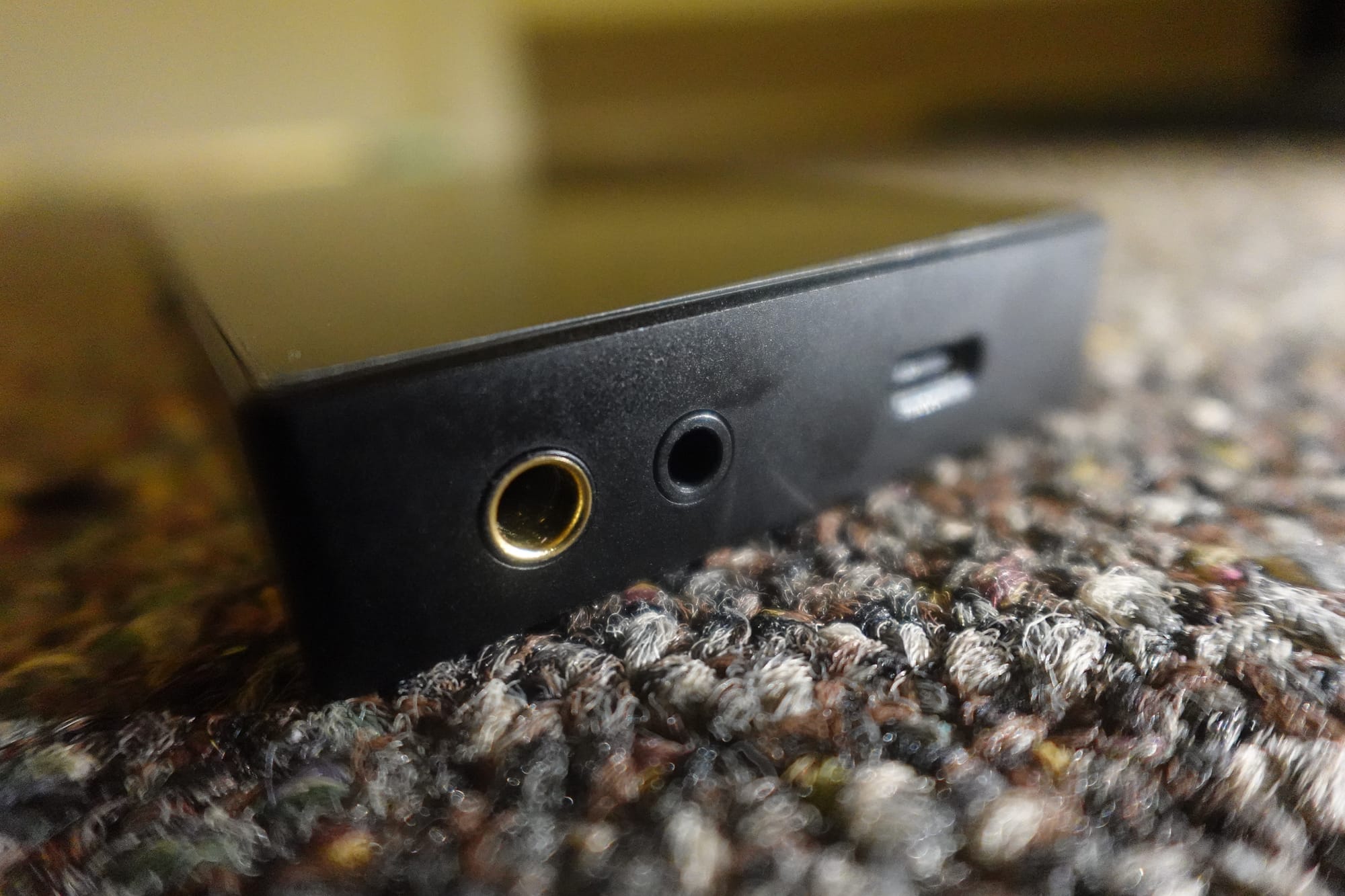
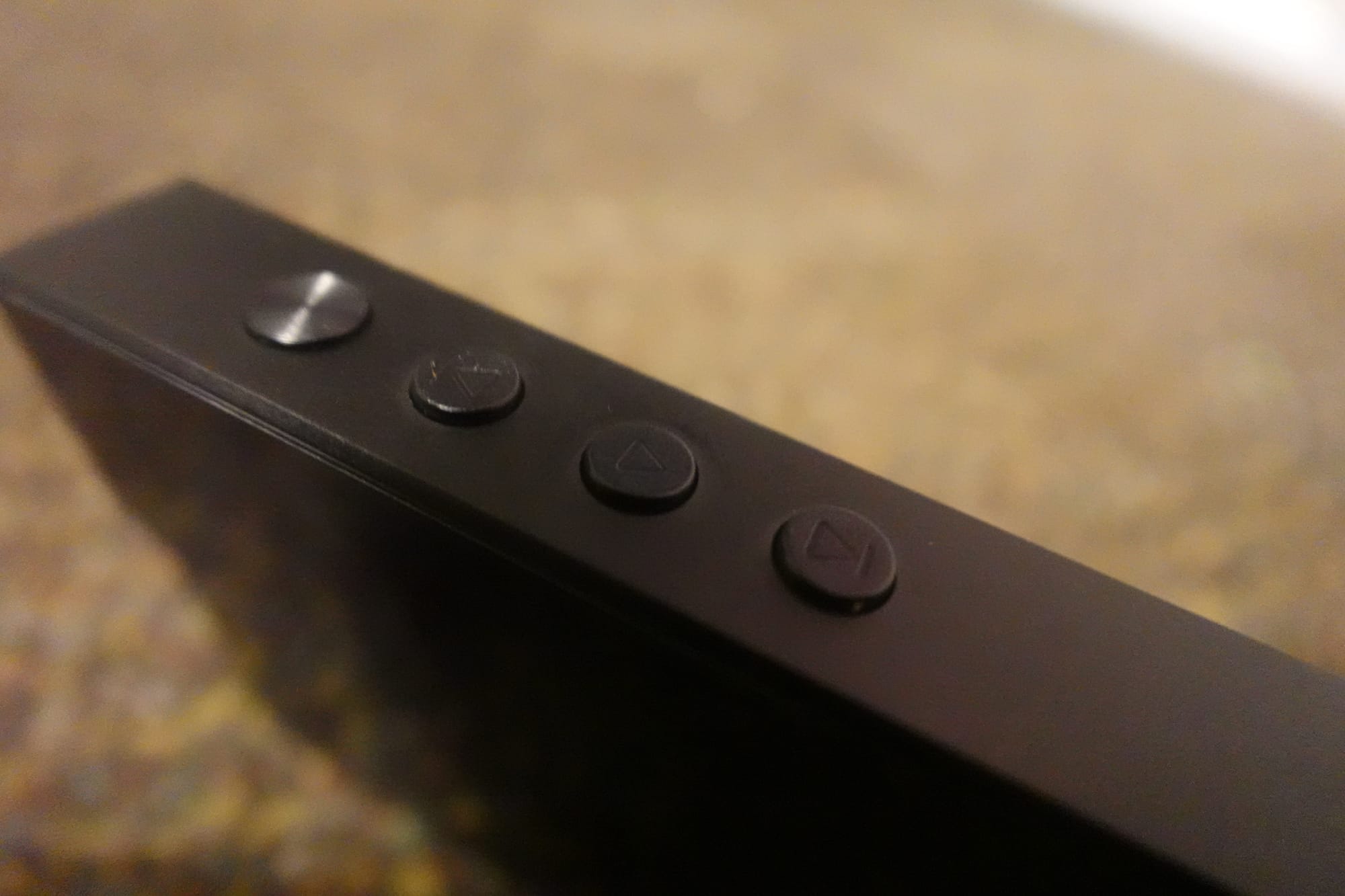
Close ups of the different facets of the HiBy R4. (Edvardi Jackson/The World Telegram News Photo)
That lock switch might actually be the most useful hardware feature on the whole device. There’s a button (or connector) on literally every side of the R4, so accidentally pressing something while holding it is almost inevitable. The lock switch helps stop that. You also could configure it to change screen orientation, but that’s about as useful as watching TV with the screen upside down—it looks wrong, and it feels wrong.
Build Quality
The R4 has a cyberpunk-inspired industrial design that feels purposeful. It's solid metal, which in the black colorway, carries an understated premium quality. With that said, I feel like the more "colorful" models represent what this device stands for: colorful sound for a less vibrant price.
In terms of size, the HiBy R4 is a chonkster, and it’s huge compared to the iPod and the Majority player. The player makes up for it in its aesthetic, but because of its size and weight, I felt a lot more concerned about it compared to the others. The all-metal construction feels like it could take a beating, and it has, but I spent a lot of money on the R4 compared to the other players, so I don’t want to chance it without a case. Thankfully, HiBy does something that the major phone companies won’t do…which is include a case in the box. It’s a silicone case, and the texture feels strange after it gets greasy, but it’s protective enough, and it says more about how greasy my fingers get than it does about the case.
In terms of it being pocketable, you can get away with putting it in your pocket as long as you’re not wearing baggy pants. I’ve found that baggy pants tend to get dragged down by the weight of the R4. You can also put it in your dress shirt/polo shirt front pocket, but because of its size, it’s a lot less stylish or practical. From what I’ve heard, the R4 is on the smaller end of many DAPs, especially the more high-end ones, but if I wanted a device that big, I’d just use the phone I’ve already got and buy a dongle DAC for less money.
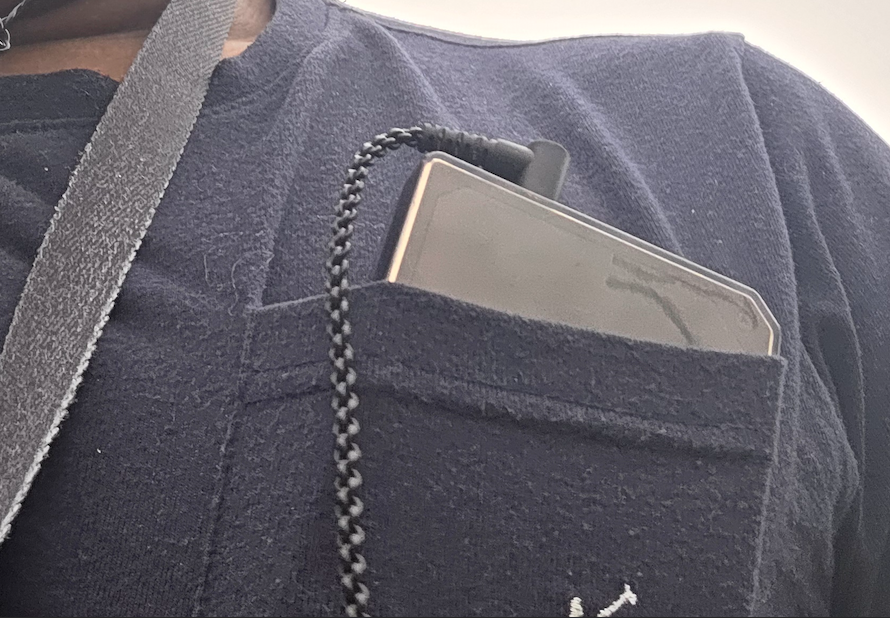
Input/Output Selection
As for the I/O, the balanced output is nice to have, but I really wish it swapped places with the 3.5mm jack. More people are going to use regular 3.5mm headphones than balanced ones, so the 3.5mm port should take precedence. There have been way too many times I’ve instinctively tried plugging my 3.5mm headphones into the balanced jack just because of its position. The current layout doesn’t make much sense.
3. Audio Support, Sound, and Personal Experience
The HiBy R4 supports a wide range of audio formats and codecs, from the usual suspects like MP3 and FLAC to obscure ones like APE, which I used years ago when ripping CDs. My personal file strategy is simple: tracks I love go in FLAC at the highest available quality, while songs I’m still on the fence about stay as 320kbps MP3s.
I do that because, as I’ve gotten older, I’ve found myself appreciating music I once dismissed. Especially the anime openings I skipped as a kid. Maybe it’s nostalgia, but I’d like to believe it’s because of a deeper appreciation of music I’ve grown over the years that comes from studying it and writing some of my own.
The R4 handles nearly every file type through its built-in HiBy Music app, and for the odd ones it doesn’t, I just use VLC because at the end of the day, it’s literally just Android.
A lot of people ask, Why buy a DAP just to listen to music? For me, it’s not about picking sides in the FLAC vs. MP3 debate, because both formats have their place. Personally, one of the biggest reasons I wanted a dedicated music player was to properly enjoy high-resolution audio. Particularly those 96 kHz FLAC files I’ve saved. Most phones either don’t support this natively or compress playback through system limitations and Bluetooth codecs. The HiBy R4 plays these files natively, with full support for CD Quality Flacs (16-bit, 44.1 kHz audio) to Hi-Res Flacs (24-bit, 48 kHz / 96 kHz / 192 kHz audio) without downsampling, no loss in detail.
None of this matters if you don’t have decent headphones, but my reasonably priced Crinacle Zero:Red IEMs were able to pick out details that were lost through compression thanks to its pretty decent soundstage. I haven’t tried more expensive headphones to be able to compare them to others, but as a beginner “audiophile”, I am more than satisfied with the audio quality I’ve seen.
One track that really showcased the R4’s capabilities was Raimon no Chikara from the Inazuma Eleven 2 soundtrack: a HUGE piece of my childhood. On high-quality FLAC rips, I could finally hear the piano chords driving the melody, the subtle acoustic guitar strumming, and the layered string section, with distinct separation between violins and violas…all details that cheaper headphones and compressed audio usually flatten. And I noticed those even in the 320kbps MP3 version. Now, imagine listening to an album in 96 kHz FLAC.
Case in point: Kessoku Band’s self-titled album. Goosebumps. End of story.
Another standout is Gyakutengeki by Tsukuyomi — my go-to test track for headphones. It has a very intricate piano arrangement buried under synths and strings, and on cheaper headphones, the subtle flourishes just disappear. On the R4 with the Zero:Red's? Everything’s there. Again, goosebumps.
In short, it’s the kind of experience that reminds you why you fell in love with music in the first place.
Now, with that said, sound quality on Bluetooth is hit or miss. I felt the sound over Bluetooth was overly digital with some very noticeable artifacts, especially on my Soundcore headphones. I also felt like Bluetooth range outside in the wind was significantly worse compared to an Android phone with similar specs. I note this because I’m attending school in Buffalo, where the weather makes no sense, and windy conditions are almost all we ever get besides rain. This effect is slightly less noticeable on the Beats and SONY headphones, but it’s enough to make me mention it anyway. Maybe my unit was defective?
Customizability
I’ve found that the R4 has a lot of quality-of-life customization features that make the difference. From being able to turn off the backlight and the front LED, to selecting alternative themes for the default launcher (options are default, and "acoustic edge"), and selecting themes for the HiBy Music app. The light mode theme features different color options, but the dark mode doesn't, unfortunately. I wish it did, but I'm happy that the option was there at least.
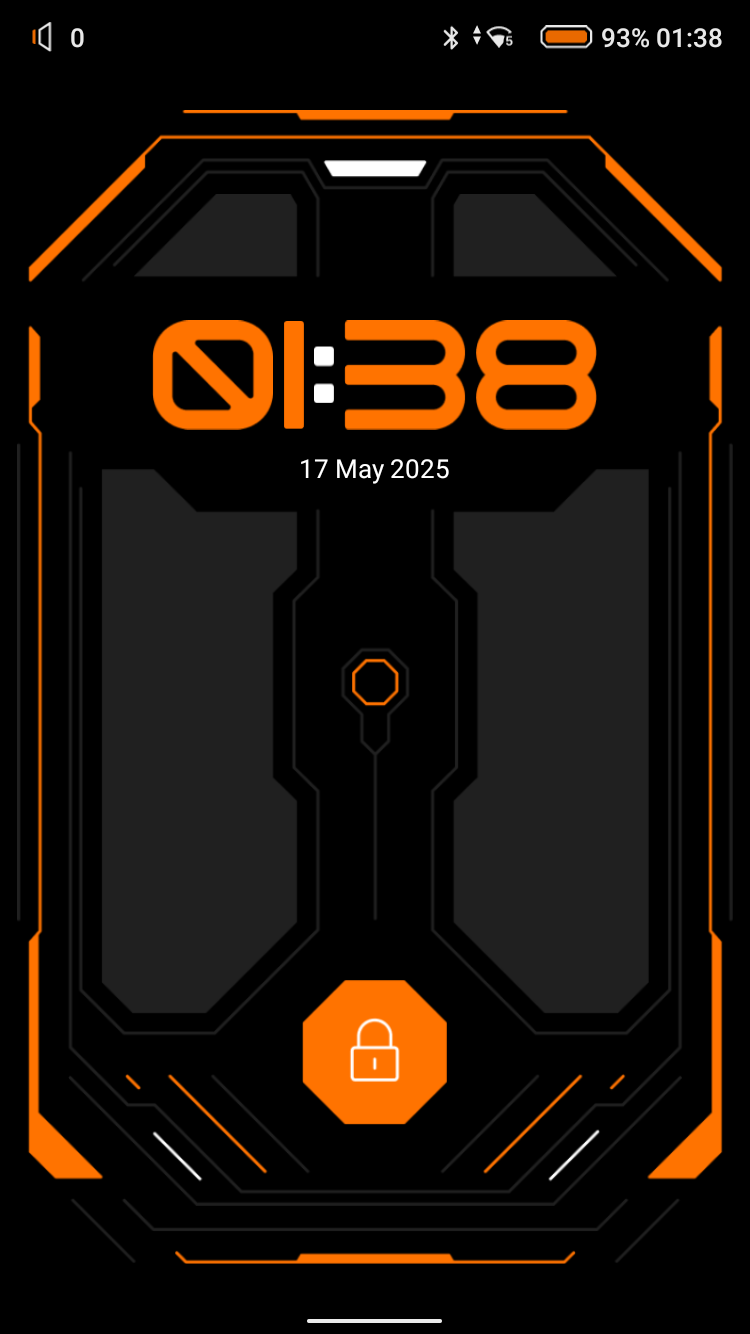
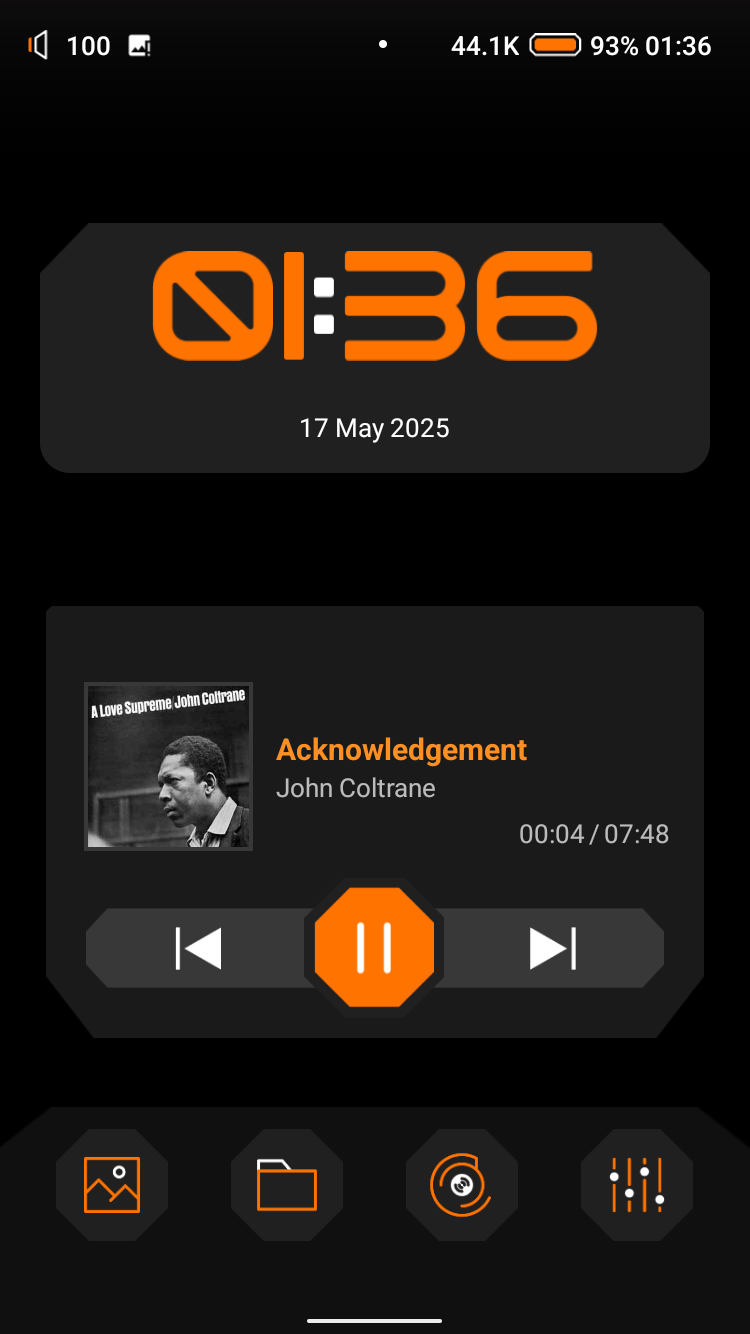
"Acoustic Edge" theme, my current theme of choice.
In hindsight, I also wish I had waited for the Evangelion version of the R4. It features NERV-style widgets for the default launcher, which look fantastic. Interestingly, when selecting widgets on the standard R4, the NERV-styled widgets appear, suggesting the assets are in the firmware, but they're not functional or accessible. A bit of a tease, really. (If you can't tell, I had an Evangelion phase last year, so...)
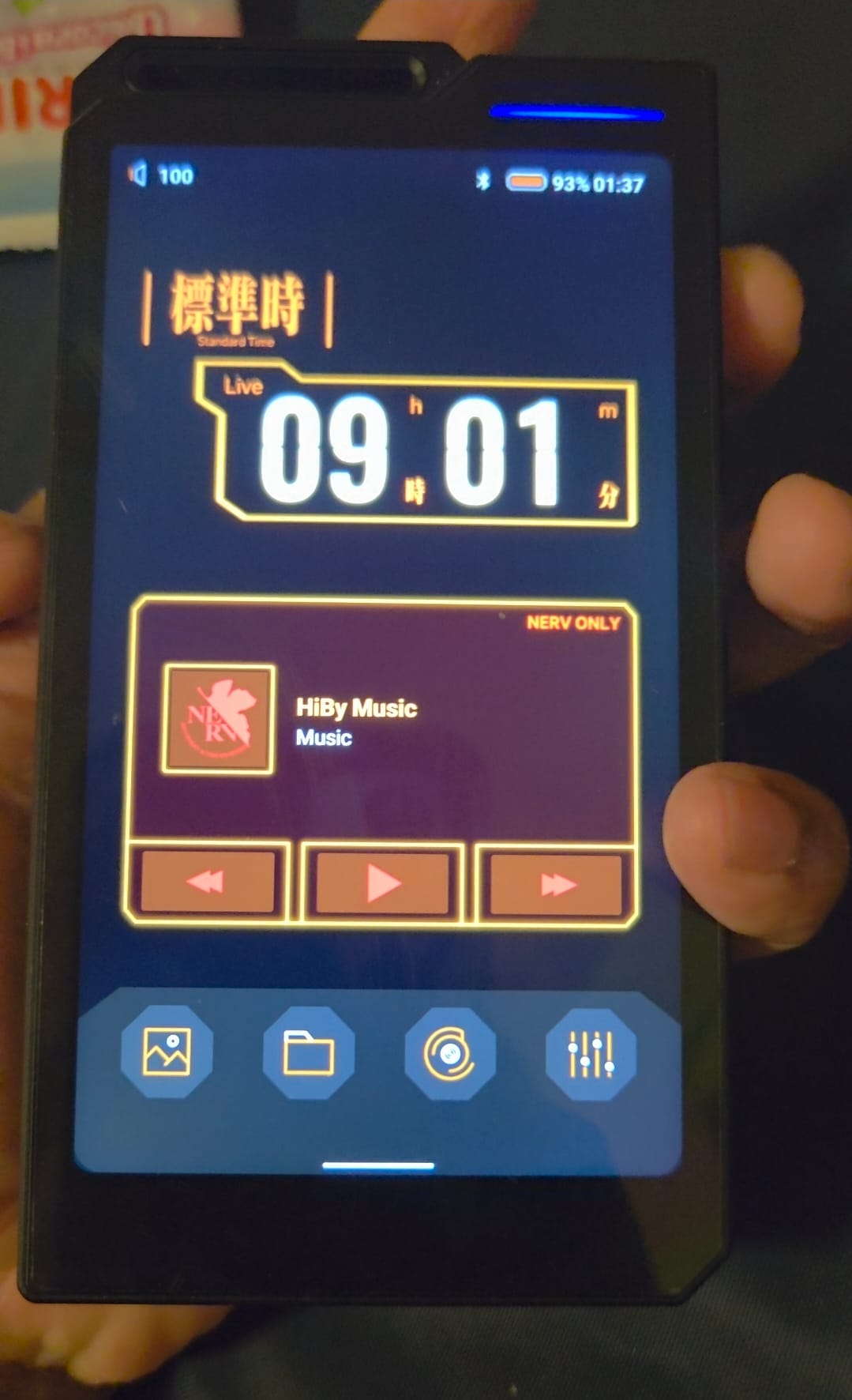
Battery Life and Temperatures
Battery life for me has been okay. Many sources say it lasts between 9-10 hours of battery life, but I don't listen to music for that long continuously because I have a life. This is the kind of device you grab before heading out, use while you’re walking around campus or commuting, and then toss back on the charger when you’re home. In that kind of use case, I usually end the day with somewhere between 30–50% battery left. And that's a heavy day. There have been days when I can charge on Sunday, and with my use case, be able to use it until Tuesday. Charging from zero to full takes about 1.5 to 2 hours. It’s reasonably fast, and with a higher-powered charger, it might even shave off a few extra minutes. I know. Not groundbreaking, but not all that frustrating either.
With that said, Bluetooth playback drains the battery faster than wired. If you're running high-bitrate files over wireless, you’ll notice the dip. For longer sessions, wired listening is a bit more efficient—and honestly, feels more "audiophile" anyway. Whatever the hell that means.
For the temperatures, sometimes, the R4 can get a bit warm when listening continuously at those higher bitrates, but it's not "2015-2019 Intel MacBook" warm, more like a light, comfortable warmth that is unnoticeable if you have the included silicone case on.
Why I Still Believe in Single-Use Devices
In 2007, the iPhone was hailed as the everything device and ushered in a new era. A computer in your pocket. Music. Telephony. Internet browsing and consumption.
Looking back, though, it’s wild to think that the original iPhone couldn’t even copy and paste text. No multitasking. No App Store at launch. Yet even with those limitations, it redefined how we interact with technology, and more importantly, how we interact with each other. Today, the capabilities of the smartphone are much larger than they were back then. AAA games are being developed with the same amount of care for mobile as they are on console. More interestingly, the connection people have to their smartphones is stronger than the connection to their own communities.
It’s easy to ask, “Why buy a digital audio player in 2025 when your phone can already do everything?” But honestly, that’s exactly why I wanted something like the HiBy R4 in the first place. Modern smartphones are built for multitasking. Even when you're just trying to listen to music, you're only a few swipes away from emails, messages, breaking news (dear God, there are quite a lot of those in this industry), and the consistent urge to doomscroll on social media. For me, who can't handle so much stimulation, this is where I start to ask...what can I do to end the endless cycle?
Single-use devices seem to be the answer, and that’s where a DAP comes in. It’s not just about better audio quality. If it were about that, you'd be spending money for the rest of your life with no end in sight. To me, it's about having a dedicated space for music. I think of it like stepping into a world I've created...with a soundtrack that's fit for my taste and no one else's. No pop-ups, no notifications, no endless carousel of apps calling for your attention. Just my music, my mood, and the moment I'm in. After all, I deleted all other apps, disabled the web browser, and only added what I needed to listen to music.
There’s also something to be said about end-to-end control. On a DAP, there’s no algorithm pushing me into a playlist of things I might like. I have to curate my own library, organize my own folders, and decide what I want to listen to before I even hit play. It slows things down in a good way, especially in a world where I'm constantly bombarded by deadlines...not just in work, but in school too. In the moment, I don't notice it. But in hindsight, it makes me think of how non-time sensitive a lot of remedial tasks are, no matter how much society makes us think they are.
If you’re someone who’s constantly toggling between tasks, someone whose phone has become more stress than it's worth, or someone who wants to reconnect with music, then yeah, a DAP still makes sense. Maybe now more than ever. Whether it's an R4, an iPod, or even an old phone you've got sitting in a drawer. Reconnect with music. Your ears will thank you for it, because maybe the goal of technology isn’t to add more features...but to help us remember who we are when we finally unplug.
Buy Now
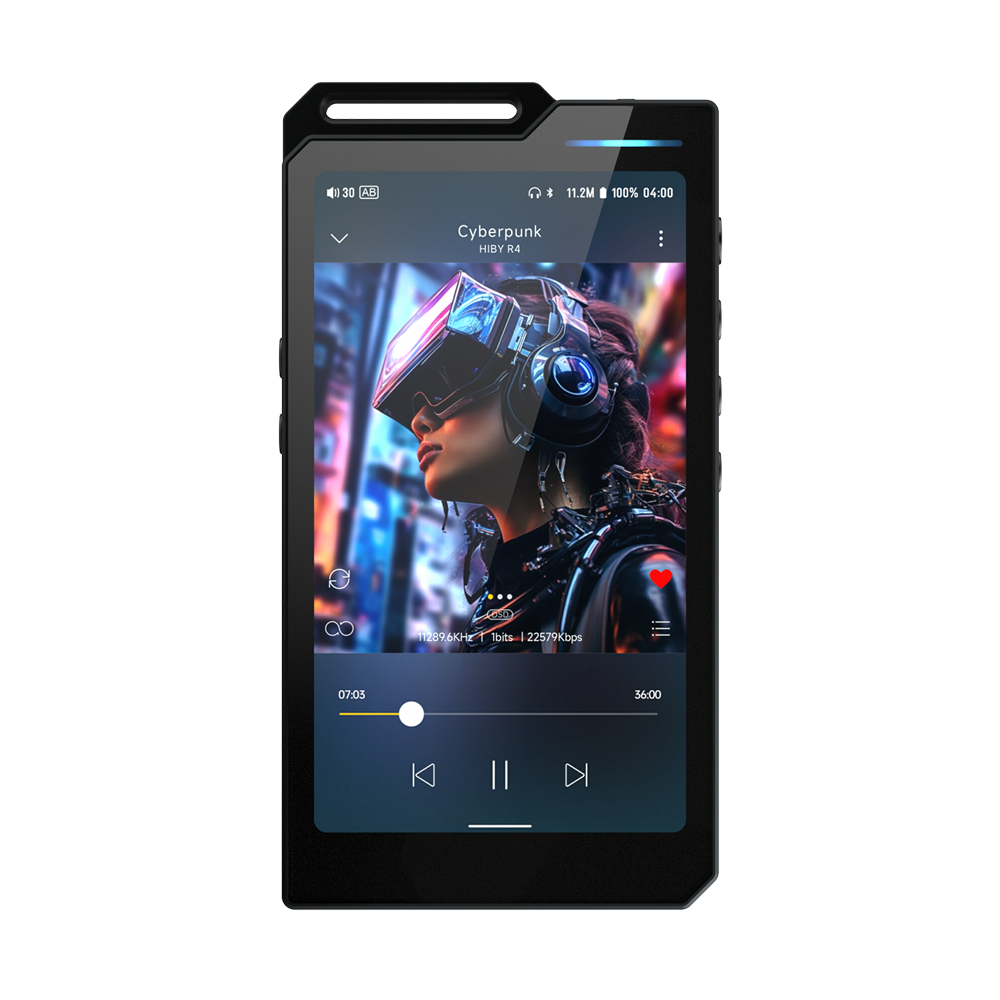
HiBy R4
Relatively balanced blend of modern tech, "audiophile" features (again, whatever that means), and app flexibility. Bulky in my opinion, but easily the most future-proof of the DAPs I've tried so far.







